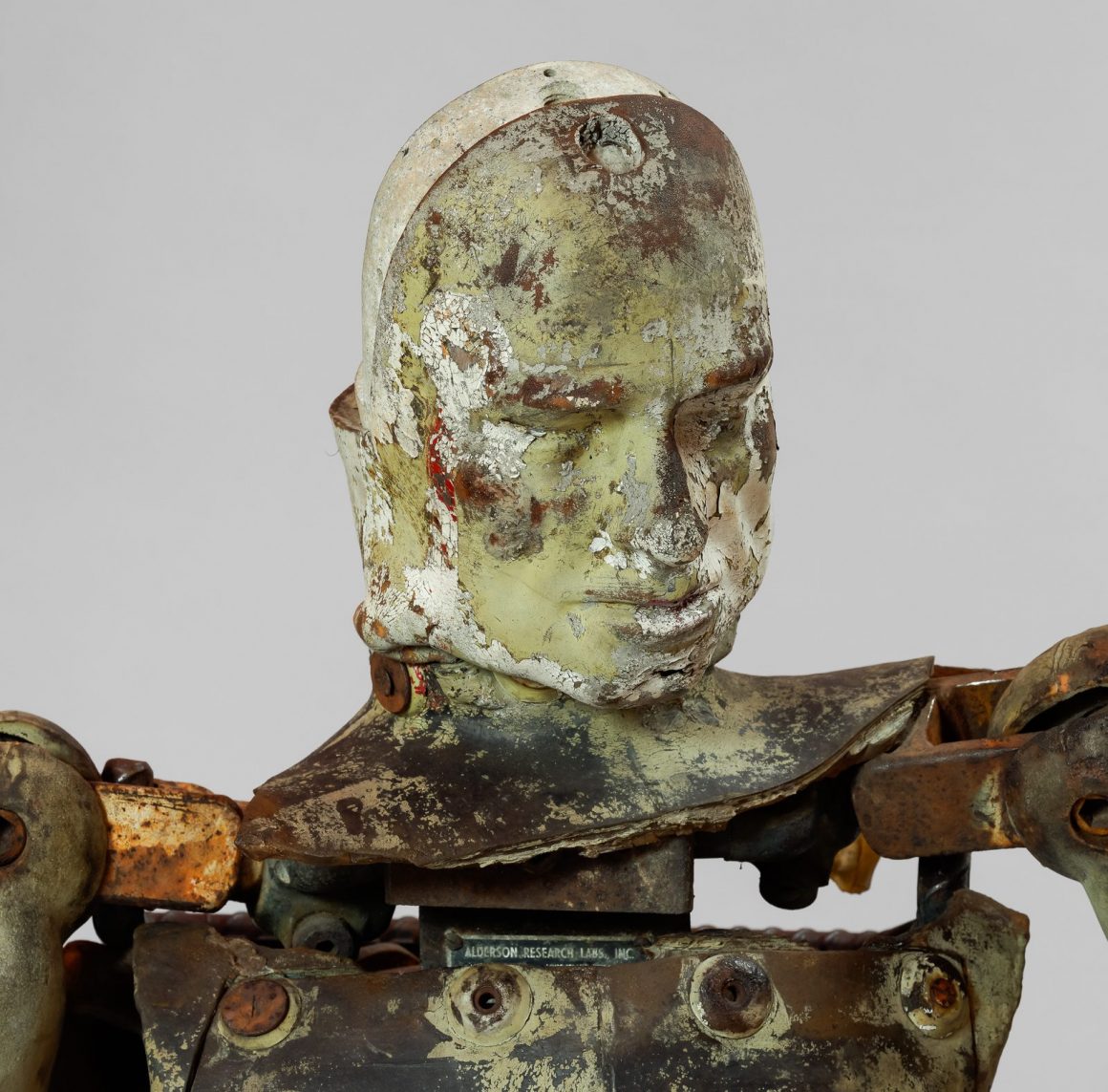
Care and Wear: Bodies Crafted for Harm and Healing at Esker Foundation Review
By Katelyn Liakos, October 16 2023—
Brendan Griebel and Jude Griedel, co-curators of the Museum of Fear and Wonder in Bergen, Alberta, invite us to delve into their archives with their thought-provoking exhibition, Care and Wear: Bodies Crafted for Harm and Healing currently on display at Esker Foundation. This remarkable archive comprises 53 historical human bodies, each meticulously crafted for distinct purposes. In this contemporary art gallery setting, these bodies are presented in a manner that encourages critical reevaluation, transcending their original intended uses.
The collection is a diverse assortment, ranging from crash test and training dummies to medical training manikins, carnival targets and dolls. By showcasing these artifacts at Esker Foundation, the curators purposefully avoid the formality often associated with a traditional museum setting. Instead, they invite viewers to engage in a dialogue with these items. I had the opportunity to do just that last Sunday.
Upon entering the exhibit, an eerie atmosphere immediately envelops you. The exhibition space is divided into three rooms, with the first two rooms connected to create a long hallway effect. This corridor is flanked on both sides by four life-sized bodies, with one positioned at the far end, beckoning you into the final room. The layout creates a sensation reminiscent of navigating a level in a suspenseful video game. As you enter, you can pick up a book that provides detailed information and a brief history of each body.
The life-sized bodies are undeniably striking and disconcerting, many bearing the scars of repeated trauma inflicted upon them for various purposes, as well as the wear and tear that time leaves on us. The full-bodied figures appeared hunched and contorted, struggling to maintain an upright posture. I couldn’t help but feel a sense of pity and an innate desire to reach out and comfort them, to reassure them.
At the end of the hallway, a life-sized metal crash test dummy from the 1960s, once employed by the Ford Motor Co., stood tall but broken. Missing its hands, with one shoulder dislocated and marked by the scars of its past duties, its blank face conveyed a profound sadness to me. I longed to convey to it that its body, once a tool subjected to repetitive violence, had ultimately served the greater good and had benefited countless people. This feeling of empathy and the desire to protect these bodies continued to resonate with me as I ventured into the next room.
As I entered the final room, I was greeted by two tables adorned with an array of smaller bodies and body parts, inviting exploration. This room introduced two new dimensions to the collection: partial bodies, meticulously crafted for specific medical purposes and bodies designed for amusement, such as dolls and carnival targets.
The sight of the medical manikins stirred deep contemplation within me. As I observed the various forms of medical trauma represented on these bodies and pondered the necessary care required to mend them, I reflected on the traumas my own body has endured, understanding that living in a body often entails subjecting it to repeated violence. Yet, to truly thrive, one must also extend the utmost care to one’s own body, allowing it to heal and persevere.
On the opposite end of the spectrum were the dolls, often fashioned to resemble little girls of their respective time periods. These dolls bore the marks of both time and play, a testament to the love they once received and the rough handling they endured during playtime. I couldn’t help but ponder the tea parties they attended and the secrets whispered into their ears. These dolls had been well-worn with love, a comforting thought that filled me as I gazed into their glassy eyes, wondering if they might share some of their secrets with me.
Exiting the exhibit, one cannot help but engage in profound reflection on the exercise of empathy and the complexities of human nature that were explored. Brendan Griebel and Jude Griedel’s collection is an experience that truly comes alive in person, set within a serene space filled with visitors engrossed in their books, decoding the purpose behind each body as they exchange hushed conversations. It offers ample time for introspection, prompting contemplation on the bodies before us—their endurance of both violence and play, the wear and tear that broke them and the care that allowed them to endure and persist to this day.
As I meditated upon these bodies, I reflected on the myriad experiences my own body has weathered and the care that has allowed it to endure. Care and Wear: Bodies Crafted for Harm and Healing is a poignant and profoundly human exhibition, despite being populated by non-human forms. It guides viewers on a journey through empathy for the bodies we inhabit while celebrating their intricate histories. In this digital age, it serves as a necessary reflection on human nature, offering a reminder of the physicality we often take for granted.
Care and Wear: Bodies Crafted for Harm and Healing is showing at Esker Foundation from now until Dec. 17. For more information visit the Esker Foundation website.
